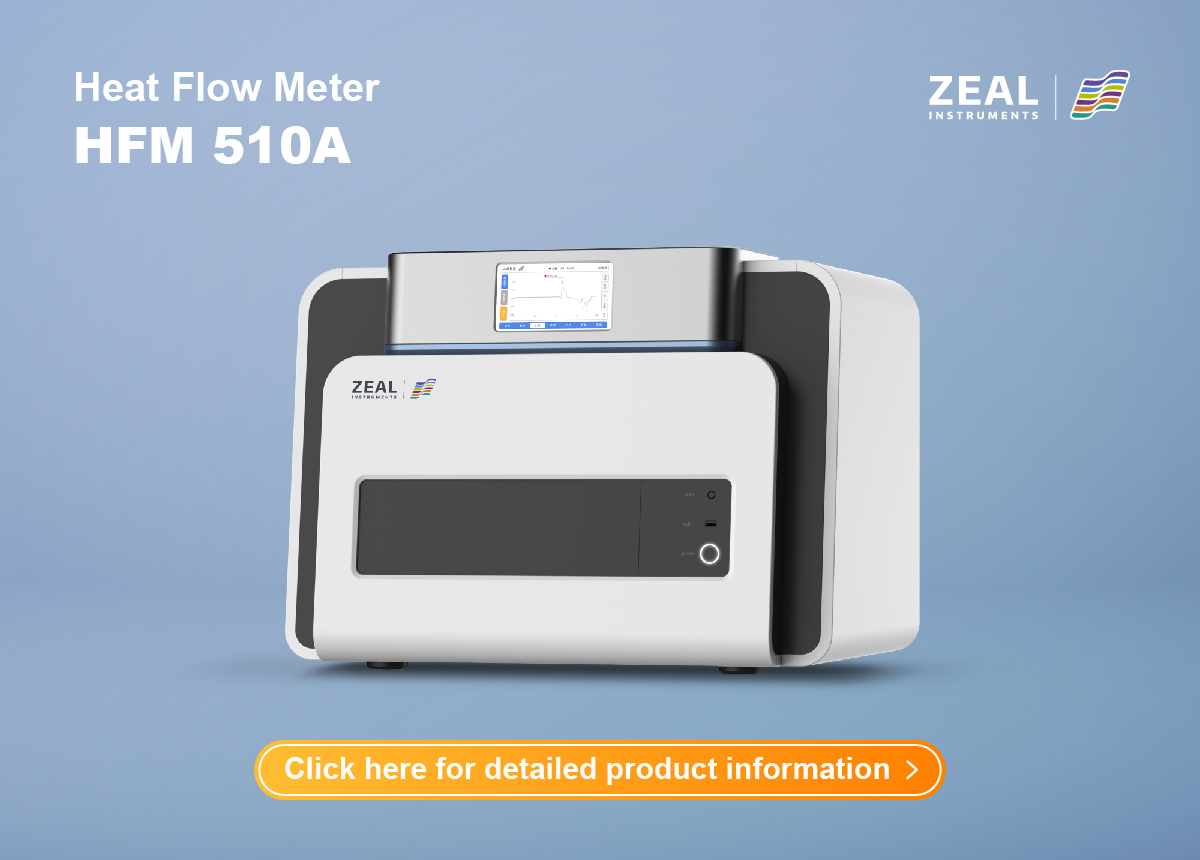Thermal Conductivity Analysis: Understanding Heat Transfer in Materials
If you are working with materials that conduct heat, you may need to analyze their thermal conductivity. Thermal conductivity analysis is the process of measuring a material’s ability to conduct heat. This measurement is important because it can help you determine how well a material will perform in various applications.
There are several methods for conducting thermal conductivity analysis. One popular method is the transient hot wire method, which involves measuring the temperature of a wire that has been heated by an electrical current. Another method is the 3ω-method, which uses a sinusoidal electrical current to heat a sample and measure its temperature. Each method has its own advantages and disadvantages, and the choice of method will depend on the specific needs of your application.
Fundamentals of Thermal Conductivity
Thermal conductivity is the property of a material that describes its ability to conduct heat. It is defined as the amount of heat that flows through a unit area of a material in unit time when there is a unit temperature difference across the material. In this section, we will discuss the basics of thermal conductivity, including the theory behind it, the modes of heat transfer, and Fourier’s Law.
Thermal Conductivity Theory
Thermal conductivity is a fundamental property of a material that depends on its chemical composition, microstructure, and temperature. In general, materials with high thermal conductivity are good conductors of heat, while materials with low thermal conductivity are poor conductors of heat. The thermal conductivity of a material is usually measured in units of W/mK (watts per meter Kelvin).
Heat Transfer Modes
Heat can be transferred in three ways: conduction, convection, and radiation. Conduction is the transfer of heat through a material by molecular collisions. Convection is the transfer of heat by the motion of a fluid, such as air or water. Radiation is the transfer of heat by electromagnetic waves, such as infrared radiation.
Fourier’s Law
Fourier’s Law states that the rate of heat transfer through a material is proportional to the temperature gradient across the material. Mathematically, it can be expressed as:
q = -kA(dT/dx)
where q is the heat flux, k is the thermal conductivity, A is the cross-sectional area of the material, and (dT/dx) is the temperature gradient across the material.
In summary, thermal conductivity is a fundamental property of a material that describes its ability to conduct heat. It depends on the chemical composition, microstructure, and temperature of the material. Heat can be transferred in three ways: conduction, convection, and radiation. Fourier’s Law describes the rate of heat transfer through a material and is proportional to the temperature gradient across the material.
Measurement Techniques
Thermal conductivity is an important material property that measures the ability of a material to conduct heat. There are two main categories of thermal conductivity measurement techniques: steady-state methods and transient methods. In this section, we will discuss the two methods in more detail.
Steady-State Methods
Steady-state methods measure the temperature difference between two surfaces of a material that is kept at a constant temperature. The most common steady-state method is the guarded hot plate method, which involves sandwiching the material between two plates, one of which is heated and the other is cooled. The heat flow through the material is measured, and the thermal conductivity is calculated using Fourier’s law.
Another steady-state method is the heat flow meter method, which involves measuring the heat flow through a flat slab of material. The temperature difference across the slab is measured, and the thermal conductivity is calculated using Fourier’s law.
Transient Methods
Transient methods measure the temperature change of a material over time when it is subjected to a heat source. The most common transient method is the transient plane source (TPS) method, which involves heating a thin disc-shaped sample with a heat pulse and measuring the temperature change over time. The thermal conductivity is calculated using the specific heat capacity, density, and thickness of the sample.
Another transient method is the transient line source (TLS) method, which involves heating a long cylindrical sample with a heat pulse and measuring the temperature change along the length of the sample over time. The thermal conductivity is calculated using the specific heat capacity, density, and radius of the sample.
In summary, both steady-state and transient methods are used to measure the thermal conductivity of materials. The choice of method depends on the material being tested, the accuracy required, and the available equipment.
Materials Analysis
Thermal conductivity is an important property of materials that is used to describe how well a material conducts heat. Different materials have different thermal conductivity values, which can be influenced by several factors, including the material’s composition, structure, and temperature. In this section, we will discuss the thermal conductivity of different materials, including metals and alloys, polymers and composites, ceramics and glasses.
Metals and Alloys
Metals and alloys are known for their high thermal conductivity values. This is due to the presence of free electrons that can easily move and transfer heat energy. Metals such as copper, aluminum, and silver are commonly used in heat exchangers, electrical wiring, and other applications that require efficient heat transfer. Alloys such as brass, bronze, and stainless steel also have high thermal conductivity values and are used in various industrial and commercial applications.
Polymers and Composites
Polymers and composites have lower thermal conductivity values compared to metals and alloys. This is due to the presence of molecular chains that hinder the movement of heat energy. However, some polymers and composites can be engineered to have higher thermal conductivity values by incorporating fillers such as carbon fibers, graphene, or nanocellulose materials [1]. These materials can improve the heat transfer properties of the polymer or composite and make it suitable for applications such as heat sinks, electronic packaging, and thermal management.
Ceramics and Glasses
Ceramics and glasses have low to moderate thermal conductivity values. This is due to their highly ordered structure, which limits the movement of heat energy. However, some ceramics and glasses can have high thermal conductivity values, such as diamond and boron nitride, which are used in high-temperature applications such as cutting tools and heat sinks. Glasses such as borosilicate and quartz have good thermal shock resistance and are used in laboratory equipment and cookware.
Overall, the thermal conductivity of a material is an important consideration when selecting materials for specific applications. Metals and alloys are suitable for high-temperature applications that require efficient heat transfer, while polymers and composites can be engineered to have higher thermal conductivity values. Ceramics and glasses have low to moderate thermal conductivity values but are suitable for applications that require good thermal shock resistance.
Applications in Engineering
Thermal conductivity analysis has a wide range of applications in engineering. In this section, we will discuss three major areas where thermal conductivity analysis is commonly used.
Electronics Cooling
One of the most common applications of thermal conductivity analysis is in electronics cooling. Electronic devices generate a lot of heat, which can cause damage to the device if not properly dissipated. Thermal conductivity analysis is used to design and optimize cooling systems for electronic devices. By analyzing the thermal properties of different materials, engineers can choose the most effective cooling solution for a given application.
Thermal Insulation
Thermal conductivity analysis is also used in the design of thermal insulation systems. By analyzing the thermal properties of different materials, engineers can choose the most effective insulation material for a given application. This is particularly important in applications where energy efficiency is a priority, such as in building construction. By using the most effective insulation materials, engineers can reduce the amount of energy required to maintain a comfortable indoor temperature.
Energy Systems
Finally, thermal conductivity analysis is used in the design and optimization of energy systems. This includes everything from power generation to energy storage. By analyzing the thermal properties of different materials, engineers can choose the most effective materials for a given application. For example, in solar power systems, thermal conductivity analysis is used to choose the most effective materials for absorbing and transferring heat from the sun to the power generation system.
In summary, thermal conductivity analysis has a wide range of applications in engineering, including electronics cooling, thermal insulation, and energy systems. By analyzing the thermal properties of different materials, engineers can choose the most effective materials for a given application, leading to more efficient and effective engineering solutions.




































